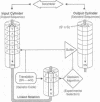Abstract
An algorithm for protein engineering, termed recursive ensemble mutagenesis, has been developed to produce diverse populations of phenotypically related mutants whose members differ in amino acid sequence. This method uses a feedback mechanism to control successive rounds of combinatorial cassette mutagenesis. Starting from partially randomized "wild-type" DNA sequences, a highly parallel search of sequence space for peptides fitting an experimenter's criteria is performed. Each iteration uses information gained from the previous rounds to search the space more efficiently. Simulations of the technique indicate that, under a variety of conditions, the algorithm can rapidly produce a diverse population of proteins fitting specific criteria. In the experimental analog, genetic selection or screening applied during recursive ensemble mutagenesis should force the evolution of an ensemble of mutants to a targeted cluster of related phenotypes.
Full text
PDF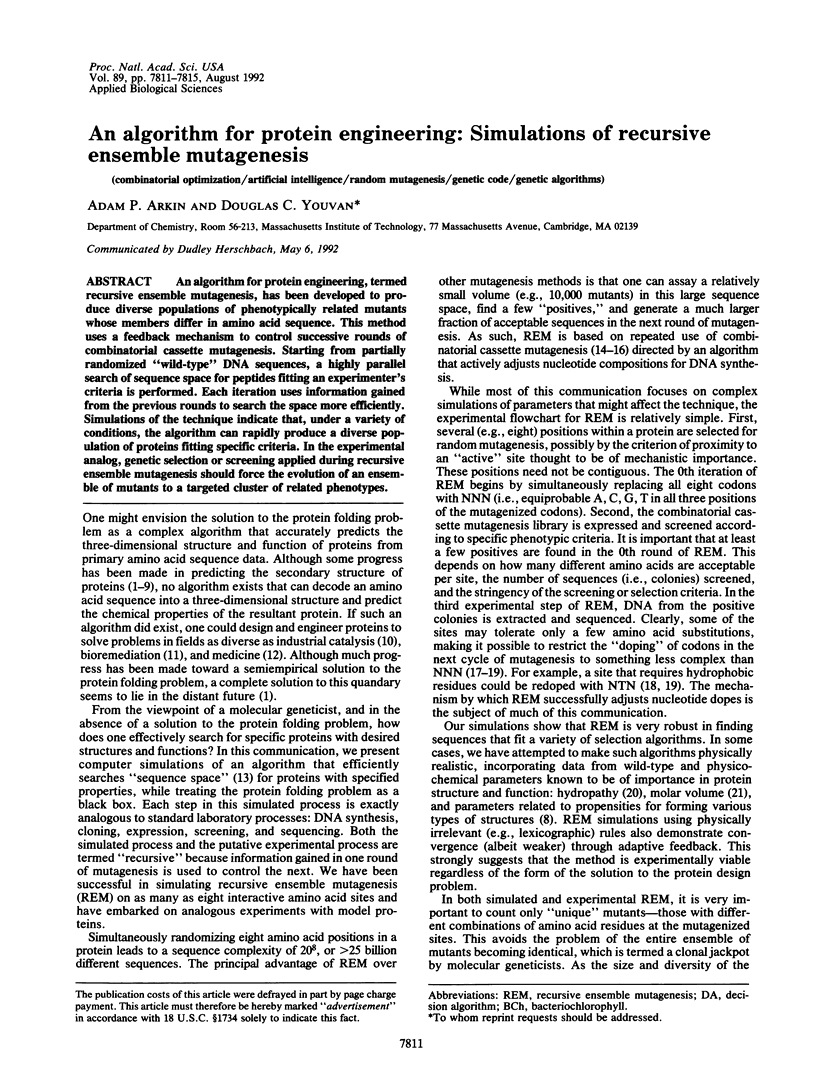

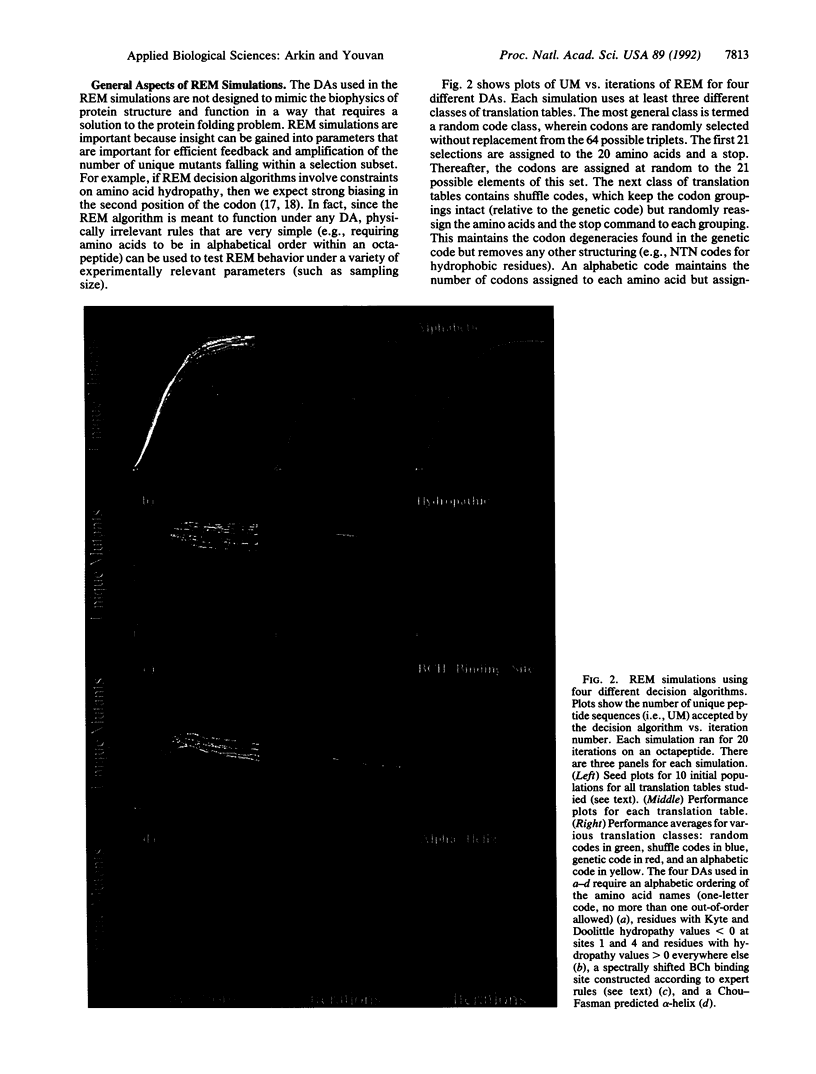
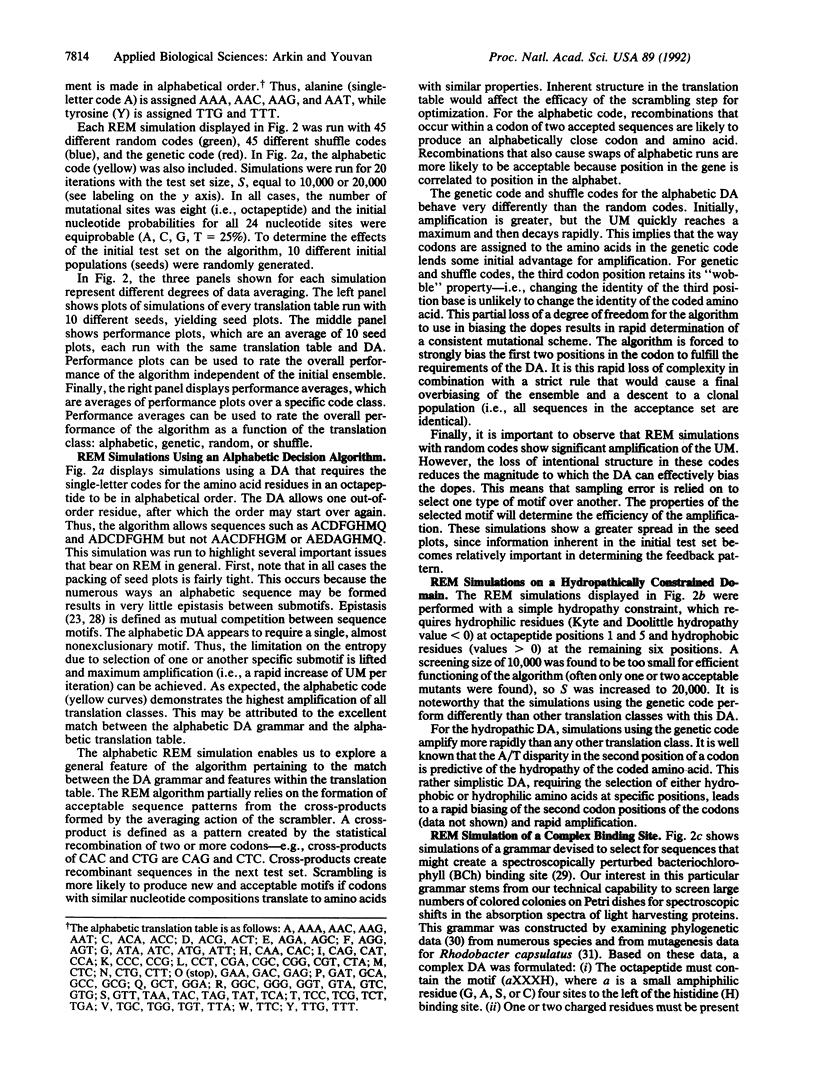
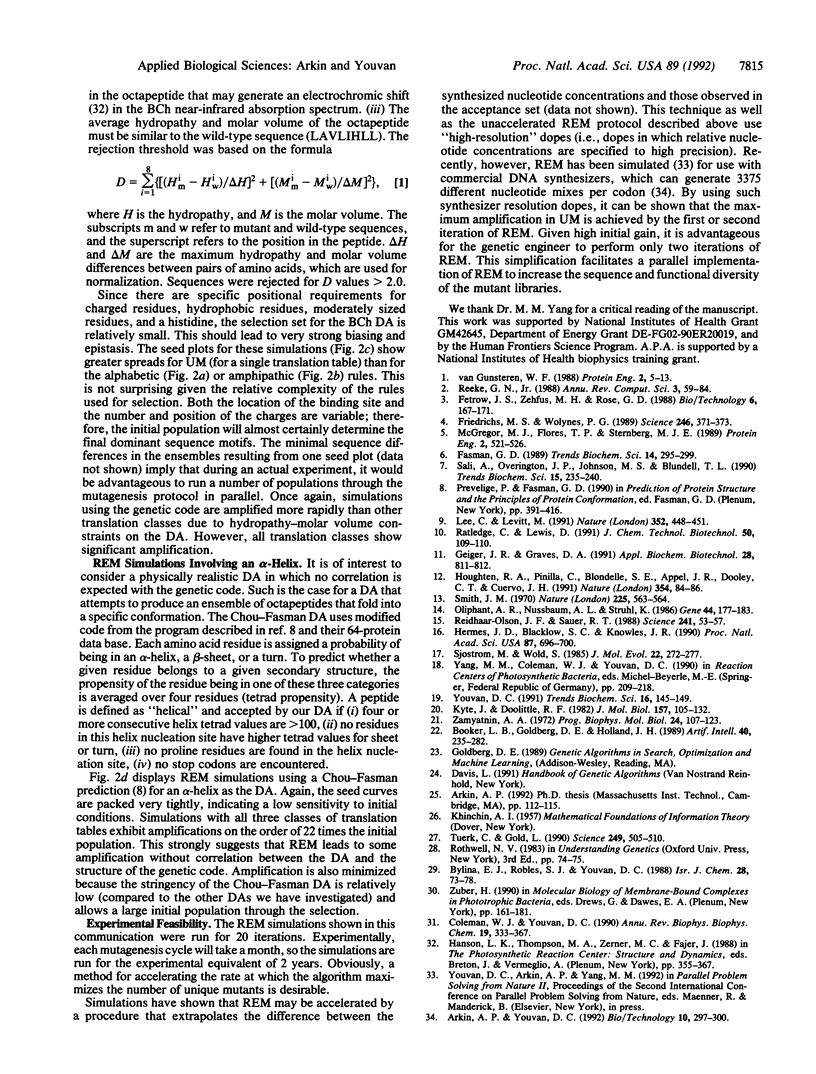
Images in this article
Selected References
These references are in PubMed. This may not be the complete list of references from this article.
- Arkin A. P., Youvan D. C. Optimizing nucleotide mixtures to encode specific subsets of amino acids for semi-random mutagenesis. Biotechnology (N Y) 1992 Mar;10(3):297–300. doi: 10.1038/nbt0392-297. [DOI] [PubMed] [Google Scholar]
- Coleman W. J., Youvan D. C. Spectroscopic analysis of genetically modified photosynthetic reaction centers. Annu Rev Biophys Biophys Chem. 1990;19:333–367. doi: 10.1146/annurev.bb.19.060190.002001. [DOI] [PubMed] [Google Scholar]
- Fasman G. D. Protein conformational prediction. Trends Biochem Sci. 1989 Jul;14(7):295–299. doi: 10.1016/0968-0004(89)90068-6. [DOI] [PubMed] [Google Scholar]
- Friedrichs M. S., Wolynes P. G. Toward protein tertiary structure recognition by means of associative memory hamiltonians. Science. 1989 Oct 20;246(4928):371–373. doi: 10.1126/science.246.4928.371. [DOI] [PubMed] [Google Scholar]
- Hermes J. D., Blacklow S. C., Knowles J. R. Searching sequence space by definably random mutagenesis: improving the catalytic potency of an enzyme. Proc Natl Acad Sci U S A. 1990 Jan;87(2):696–700. doi: 10.1073/pnas.87.2.696. [DOI] [PMC free article] [PubMed] [Google Scholar]
- Houghten R. A., Pinilla C., Blondelle S. E., Appel J. R., Dooley C. T., Cuervo J. H. Generation and use of synthetic peptide combinatorial libraries for basic research and drug discovery. Nature. 1991 Nov 7;354(6348):84–86. doi: 10.1038/354084a0. [DOI] [PubMed] [Google Scholar]
- Kyte J., Doolittle R. F. A simple method for displaying the hydropathic character of a protein. J Mol Biol. 1982 May 5;157(1):105–132. doi: 10.1016/0022-2836(82)90515-0. [DOI] [PubMed] [Google Scholar]
- Lee C., Levitt M. Accurate prediction of the stability and activity effects of site-directed mutagenesis on a protein core. Nature. 1991 Aug 1;352(6334):448–451. doi: 10.1038/352448a0. [DOI] [PubMed] [Google Scholar]
- McGregor M. J., Flores T. P., Sternberg M. J. Prediction of beta-turns in proteins using neural networks. Protein Eng. 1989 May;2(7):521–526. doi: 10.1093/protein/2.7.521. [DOI] [PubMed] [Google Scholar]
- Oliphant A. R., Nussbaum A. L., Struhl K. Cloning of random-sequence oligodeoxynucleotides. Gene. 1986;44(2-3):177–183. doi: 10.1016/0378-1119(86)90180-0. [DOI] [PubMed] [Google Scholar]
- Reidhaar-Olson J. F., Sauer R. T. Combinatorial cassette mutagenesis as a probe of the informational content of protein sequences. Science. 1988 Jul 1;241(4861):53–57. doi: 10.1126/science.3388019. [DOI] [PubMed] [Google Scholar]
- Sali A., Overington J. P., Johnson M. S., Blundell T. L. From comparisons of protein sequences and structures to protein modelling and design. Trends Biochem Sci. 1990 Jun;15(6):235–240. doi: 10.1016/0968-0004(90)90036-b. [DOI] [PubMed] [Google Scholar]
- Sjöström M., Wold S. A multivariate study of the relationship between the genetic code and the physical-chemical properties of amino acids. J Mol Evol. 1985;22(3):272–277. doi: 10.1007/BF02099756. [DOI] [PubMed] [Google Scholar]
- Smith J. M. Natural selection and the concept of a protein space. Nature. 1970 Feb 7;225(5232):563–564. doi: 10.1038/225563a0. [DOI] [PubMed] [Google Scholar]
- Tuerk C., Gold L. Systematic evolution of ligands by exponential enrichment: RNA ligands to bacteriophage T4 DNA polymerase. Science. 1990 Aug 3;249(4968):505–510. doi: 10.1126/science.2200121. [DOI] [PubMed] [Google Scholar]
- Youvan D. C. Photosynthetic reaction centers: interfacing molecular genetics and optical spectroscopy. Trends Biochem Sci. 1991 Apr;16(4):145–149. doi: 10.1016/0968-0004(91)90057-3. [DOI] [PubMed] [Google Scholar]
- Zamyatnin A. A. Protein volume in solution. Prog Biophys Mol Biol. 1972;24:107–123. doi: 10.1016/0079-6107(72)90005-3. [DOI] [PubMed] [Google Scholar]
- van Gunsteren W. F. The role of computer simulation techniques in protein engineering. Protein Eng. 1988 Apr;2(1):5–13. doi: 10.1093/protein/2.1.5. [DOI] [PubMed] [Google Scholar]



